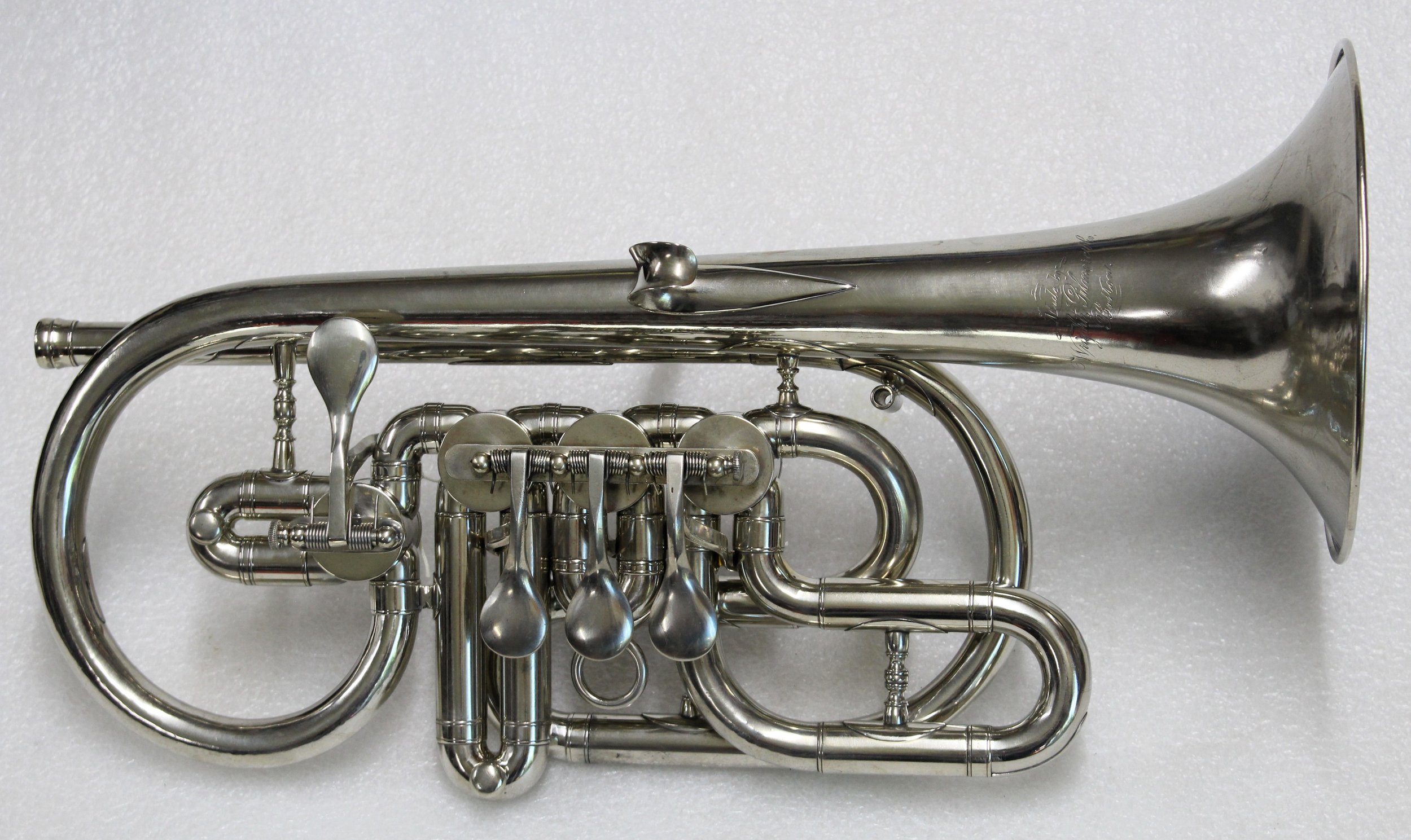Gilmore (Graves) & Co., Boston
Advertising in Harper’s Weekly, June, 1866
Gilmore had previously been in the publishing business, but upon returning with his band from Civil War duty, he established a short lived (1864 to 1866) partnership with Samuel Graves and two of his sons at 18 Harvard Place. In 1864, E.G. Wright, Henry Esbach and Louis Hartmann moved out of that shop, leaving behind members of the Graves family. They had occupied that shop for several year along with the Graves. Gilmore had previously been in the publishing business, but upon returning with his band from Civil War duty, he established a short lived (1864 to 1866) partnership with Samuel Graves and two of his sons at 18 Harvard Place. A new company was formed: Gilmore, Graves & Co. which continued to build a complete line of rotary valve instruments. The famous bandleader, cornet soloist and composer, Patrick Sarsfield Gilmore would have seen the success that another famous bandleader, David C. Hall had in partnering with J.L. Allen and the Quinby brothers. Within two years, the company changed its name to Gilmore & Co.
I'm quite sure that Gilmore never dirtied his hands with the actual instrument making, but rather was an investor in a company that allowed one or more experienced makers to continue their production. This shop location had previously been occupied not only by businesses of Graves and Wright, but also J.L. Allen, D.C. Hall and the Huttl brothers, all important Boston brass instrument makers. It is possible that Graves & Co. were not able to keep going after Wright, Esbach & Hartman left without Gilmore’s investment. It seems that the very last instruments engraved with the Graves name (which went back to the early 1820s) were those with “Gilmore, Graves & Co.” in 1865.
In 1867, the Graves family members moved in to Wright's shop at 71 Sudbury St. In that year, Patrick Gilmore had additional instruments made under the name “Wright, Gilmore & Co.”, which were identical to E.G. Wright’s own designs. It doesn’t seem likely that any were made there under “Graves & Co.”, but members of the Graves family worked at Wright’s shop and then Boston Musical Instrument Manufactory, when it was formed at the same address in 1869. The complete story must be even more complicated than this and we will probably never know all the details of the business that was being done.
It would be interesting to compare some measurements of bells and valve parts on instruments under Gilmore’s leadership and those by other Boston makers to try and determine if this new partnership tooled up to make all their own parts or were purchasing them from other makers. I have previously determined that the soprano valve bugle bells made by Allen, Hall and Quinby were made on different mandrels than those of Wright, as were earlier instruments signed "Graves & Co. Boston". I'm guessing that the cornet and valve bugle bells were made on that earlier Graves bell mandrels. I have much work to do in this regard in trying to shed more light on business relationships.
Most of what we know about these makers comes from the research and various articles by Robert Eliason









